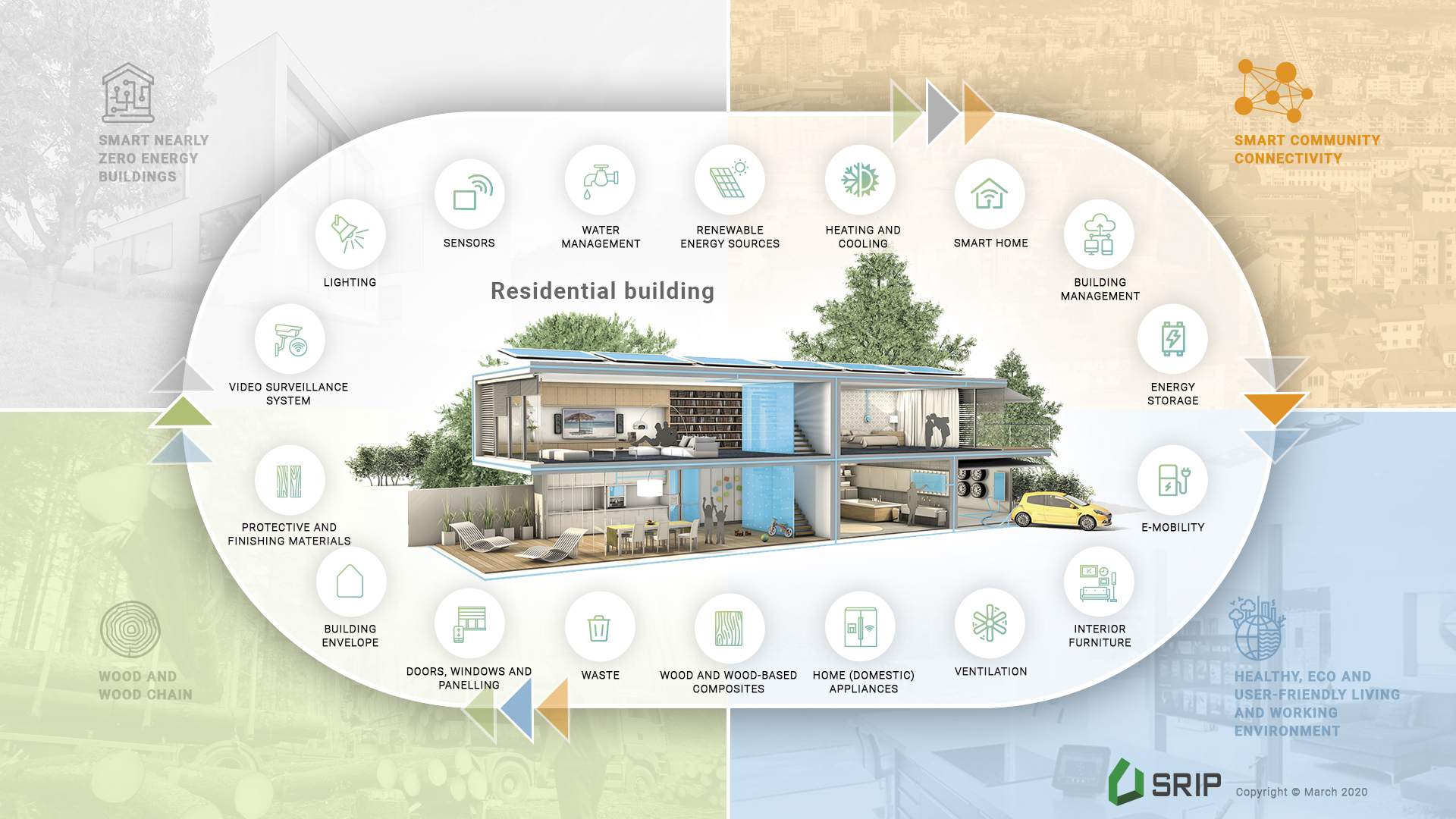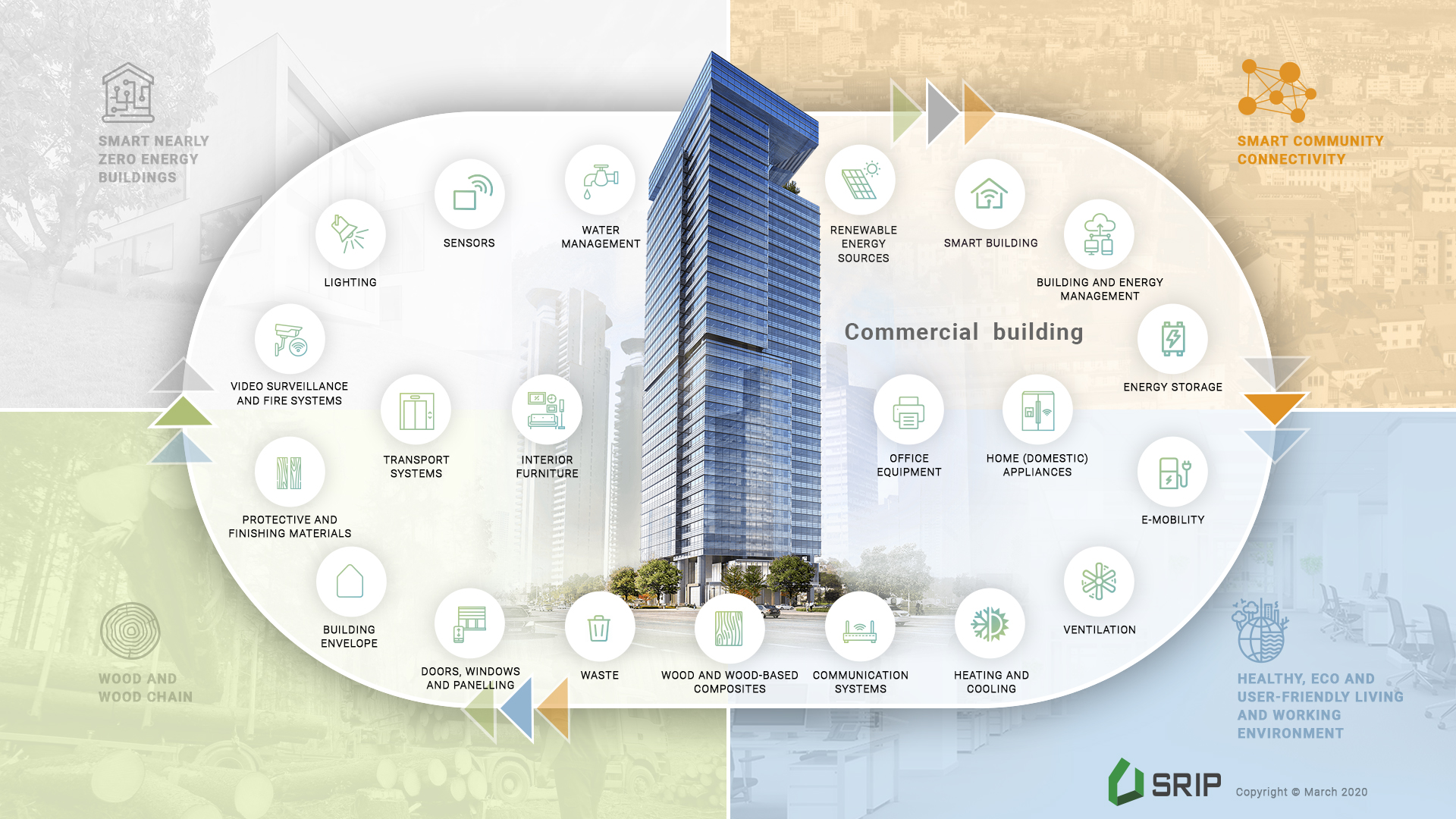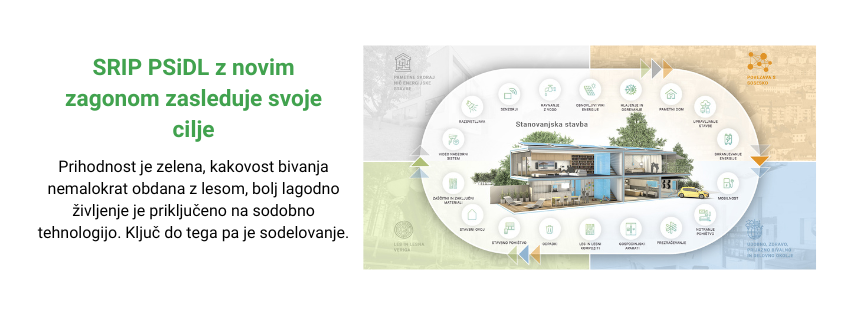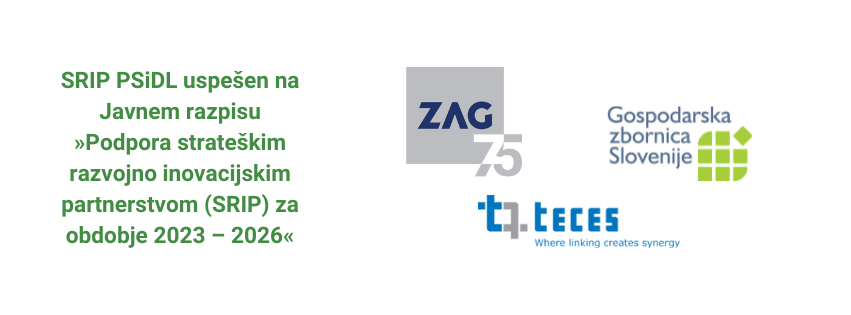The SRIP covers sustainable construction and an intelligent approach to the design, construction, management, operation and occupancy of buildings. Particular emphasis is placed on indoor environmental quality, energy efficiency and environmental care.
The aim of the partnership is to start developing, promoting and selling quality and advanced indoor environments instead of individual appliances, buildings and systems.
The vision of the partnership is:
COMPREHENSIVE SOLUTIONS
sustainable,
environmentally and user-friendly, healthy,
connectivity and energy self-sufficiency
LIVING AND WORKING ENVIRONMENT OF THE FUTURE.
The SRIP PSiDL focuses on smart buildings and homes and their associated advanced infrastructure to connect to the neighbourhood of the future, from the perspective of living elements such as smart devices and smart home management, and from the perspective of the sustainable building as a framework for living. In addition, the PSiDL SRIP also includes wood and wood-based materials, both for the installation in the building and for the furnishing of the building.
The focus is on smart buildings, both for residential and commercial use.


Global Challenges and Trends
The global challenges faced by companies or members of the PSiDL SRIP stem from trends and megatrends on the one hand, and from realities (lifespan, climate change) on the other.
The identified challenges that the members of the partnership are addressing are:
-
The ageing of the population; the life expectancy of the population is increasing and the pattern of people's behaviour and expectations in later life is changing. On the one hand, there is a trend towards active ageing and, on the other hand, a trend towards care for the elderly at home. As a consequence, the living environment will have to be changed to make it easier for the elderly to live with smart solutions. Such changes include smart control of the elderly person's activity, adaptation of environmental parameters (temperature, humidity and light) to the elderly, easy and intuitive control of important home functions, etc. Slovenian companies are responding to this trend, for example by developing furniture that facilitates the elderly person's movement and care, such as beds with variable heights, kitchen counters that allow seated work, wider aisles between furniture pieces, avoiding stairs, and the installation of lifts. The opportunity and challenge for Slovenian companies lies, among other things, in creating products tailored to a specific group of elderly people.
-
Digitalisation; the trend towards digitalisation in the construction, building management and living processes is very much present. The process of digitisation of design with the introduction of BIM has already started, with control systems from various global manufacturers (e.g. Samsung SmartThings) entering the home. Digitisation also enables the mass collection of building data and learning from this data, which has not yet been implemented. Digitalisation is also coming very fast to building construction, so the main challenge and opportunity for companies is to keep pace. The challenges are the compatibility of BIM and digital twin data, interfaces to predictive models for building management, energy trading systems, digital security, etc. The challenges are at the same time an opportunity, and the integration of several different companies from different disciplines is essential.
-
Environmental protection and global warming; these two topics are certainly the topics of the future. Climate change and the depletion of the planet's natural resources are forcing a change in the production of various products, including buildings and building elements. For manufacturers, this means increasing awareness of the environmental footprint of products, including the footprint of production, increasing energy efficiency, integrating renewable energy sources (RES) into buildings (and appliances), increasing the use of biogenic materials, especially wood, reusing products and increasing the use of recycled materials, designing for decommissioning, etc. The PSiDL JPI can make a major contribution to addressing the framework of these objectives.
- Individualisation; particular attention must be paid to the diversity of users, both in terms of preferences and expectations and in terms of patterns of behaviour and knowledge or mastery of technologies. A particular challenge is therefore to balance the automatic operation of systems and to offer the user the possibility of controlling these systems without inadvertently putting them into an adversarial or malfunctioning state.
|
Global development trends:
- User comfort in terms of microclimate, light, acoustic environment and safety
- Occupant health in terms of the impact of the building on the occupant or the release of harmful substances as a result of unsuitable materials, pathogenic moulds due to inadequate construction and/or microclimatic conditions
- Information connectivity of devices and the building as a whole (IoT) and to the smart building as part of smart communities
- Integration and synergies between larger building units such as the building, the neighbourhood, mobility, the circular economy and production processes
- Connected building, including energy and waste streams
- Energy efficiency of buildings and their individual components in the use and production phases
- Environmental friendliness, which shall be demonstrated by appropriate certification schemes according to a validated methodology
- Use of wood and other natural and renewable materials (e.g. timber construction, wooden furniture)
- Process efficiency (e.g. industrial processes, construction and pre-manufactured solutions)
- Safety of buildings (e.g. active and passive protection against fire, earthquake or decomposition)
|











